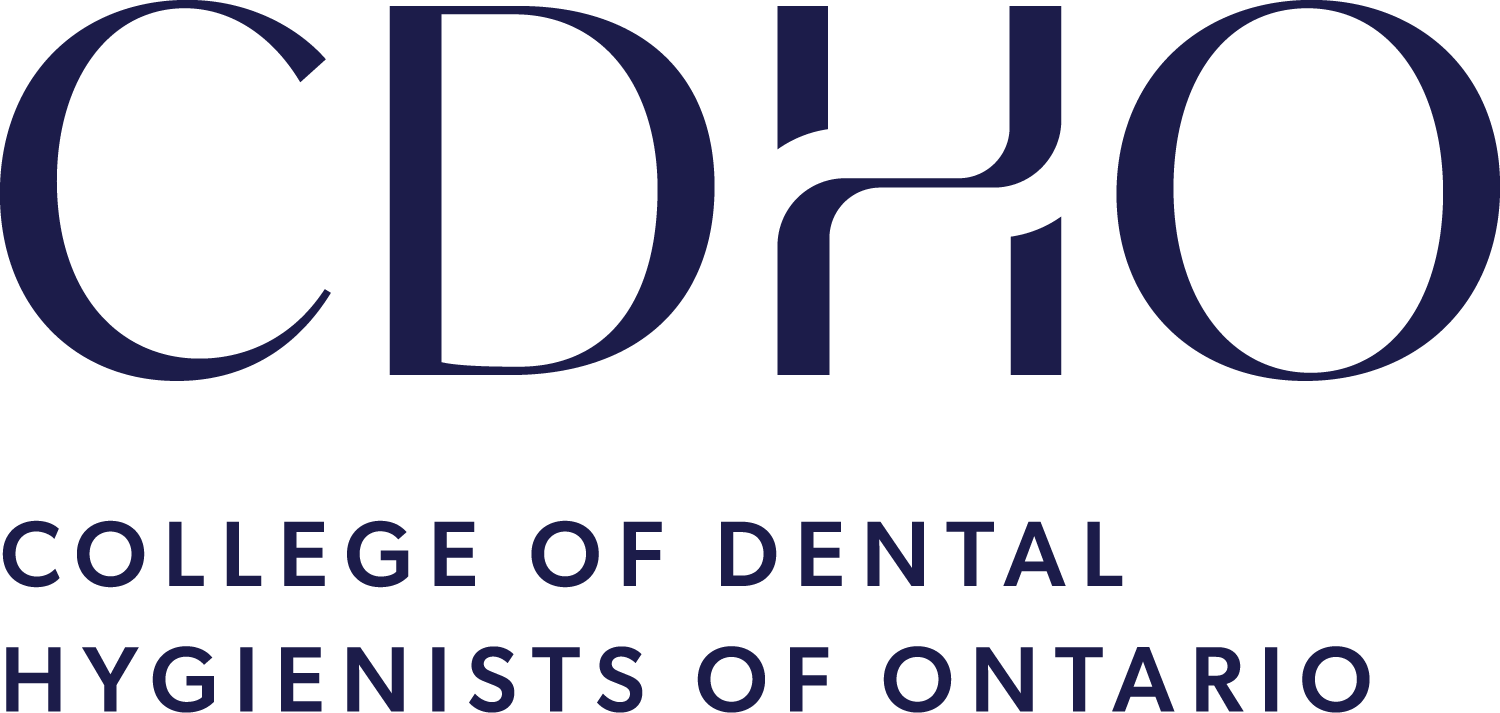FACT SHEET: Strep Throat (also known as “streptococcal sore throat”, “strep pharyngitis”, and “strep tonsillitis”; caused by Group A [beta-haemolytic] streptococci bacteria [GAS]1)
Is the initiation of non-invasive dental hygiene procedures* contra-indicated?
- Yes.
Is medical consult advised?
- Yes, if the patient/client has suspected or laboratory-confirmed strep throat or is otherwise unwell with oral manifestations and related signs and symptoms. Refer to primary care provider (e.g., physician or nurse practitioner) for definitive diagnosis (e.g., rapid strep test or throat swab and culture) and treatment. Instruct patient/client to reschedule dental hygiene appointment when patient/client feels well AND when antibiotic therapy has been initiated for at least 24 hours (and preferably until the full course of antibiotic treatment has been completed) if strep throat has been diagnosed. If there is a patient/client history of rheumatic fever2 (now rare in developed countries), it is particularly prudent to wait until the course of antibiotic treatment has been completed. Oral antibiotic regimens − such as penicillin V and most alternatives − typically require a 10-day course to achieve successful treatment and prevent post-streptococcal complications. A notable exception is azithromycin which, given its long half-life, requires only 5 days of therapy.
Is the initiation of invasive dental hygiene procedures contra-indicated?**
- Yes.
Is medical consult advised?
- Yes; see above.
Is medical clearance required?
- Yes.
Is antibiotic prophylaxis required?
- No.
Is postponing treatment advised?
- Yes (until patient/client has been on an antibiotic regimen for at least 24 hours).
Oral management implications
- Mode of transmission is most commonly via large respiratory droplets or direct contact with patients/clients or carriers, and rarely via direct contact with objects. Outbreaks of strep throat may occur via ingestion of contaminated food; contamination of milk or egg products by humans appears to be the most important source of foodborne episodes.
- In untreated, uncomplicated cases, the period of communicability is typically 10−21 days. With adequate penicillin treatment, transmissibility usually ends within 24 hours. Persons with untreated strep throat may carry the bacteria for weeks to months; contagiousness of these persons decreases sharply in 2−3 weeks after the onset of infection.
- In cases of laboratory confirmed or suspected strep throat, delay elective treatment until the signs and symptoms of strep throat have subsided and antibiotic therapy has been initiated for at least 24 hours and preferably for the full duration of the prescription (typically 10 days).
- Referral for antibiotic consideration is important to reduce the likelihood of serious GAS complications.
- Spread of GAS infection can be reduced by good hand washing, especially after coughing and sneezing.
Oral manifestations
- Red and swollen tonsils, often with white patches (exudate) or streaks of pus (purulent discharge)
- Red spots (petechiae) on the soft and/or hard palate
- Throat pain and difficulty swallowing
Related signs and symptoms
- Fever; swollen, tender lymph nodes in the neck; headache; rash; nausea and abdominal pain (especially in young children, sometimes accompanied by vomiting); body aches; fatigue.
- Some people may carry GAS in the throat or on the skin and have no symptoms of illness. Most GAS infections are relatively mild illnesses such as strep throat or impetigo. Severe, sometimes life-threatening GAS infections occasionally occur when bacteria spread to the blood, muscles, or lungs. Ineffective treatment of GAS infections can result in the post-infectious sequelae of acute rheumatic fever and post-streptococcal glomerulonephritis.
- Sick persons, such as those who have strep throat or impetigo, are most likely to spread the infection. Persons who carry the bacteria but are asymptomatic are much less contagious.
References and sources of more detailed information
- College of Dental Hygienists of Ontario
https://cdho.org/factsheets/infective-endocarditis/ - Canadian Paediatric Society, Caring for Kids
https://caringforkids.cps.ca/handouts/health-conditions-and-treatments/strep_throat - Centers for Disease Control and Prevention
https://www.cdc.gov/groupAstrep/index.html - MedlinePlus
https://medlineplus.gov/ency/article/000639.htm (Strep throat)
https://medlineplus.gov/impetigo.html - Mayo Clinic
https://www.mayoclinic.org/diseases-conditions/strep-throat/symptoms-causes/syc-20350338 - MSD Manual (Professional Version)
https://www.msdmanuals.com/professional/infectious-diseases/gram-positive-cocci/streptococcal-infections - Kanwal S, Vaitla P. Streptococcus Pyogenes. [Updated 2022 Aug 1]. In: StatPearls [Internet]. Treasure Island (FL): StatPearls Publishing; 2023 Jan-. https://www.ncbi.nlm.nih.gov/books/NBK554528/
- Anti-Infective Review Panel. Anti-infective guidelines for community-acquired infections. Toronto: MUMS Health Clearinghouse; 2019.
- Heymann DL (ed.). Control of Communicable Disease Manual (20th edition). Washington: American Public Health Association; 2015.
FOOTNOTES
1 also known as Streptococcus pyogenes
2 Rheumatic fever (RF) is an inflammatory disease triggered by Group A streptococcal bacterial infection. It usually begins as strep throat infection or scarlet fever that hasn’t been treated with antibiotics. RF can cause rheumatic heart disease (RHD), which describes a group of short-term (acute) and long-term (chronic) heart disorders. RHD usually occurs 10-20 years after the initial RF illness, but not everyone with rheumatic fever will go on to develop RHD. Rheumatic heart disease is a risk factor for infective endocarditis (IE).
* Includes oral hygiene instruction, fitting a mouth guard, taking an impression, etc.
** Ontario Regulation 501/07 made under the Dental Hygiene Act, 1991. Invasive dental hygiene procedures are scaling teeth and root planing, including curetting surrounding tissue.
